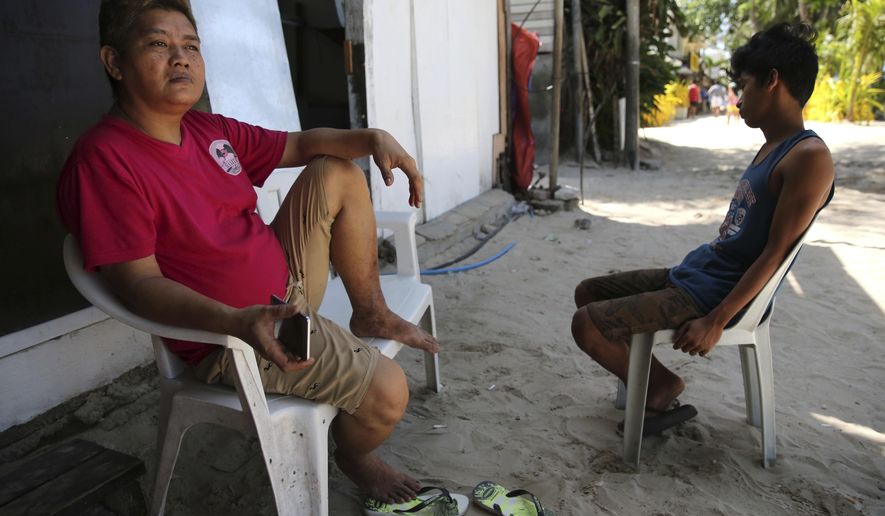BORACAY, Philippines (AP) - The cooks, hotel workers and other Filipinos who served tourists at the country’s most popular beach headed home and started looking for other work Thursday as police guarded the empty beach on the first day of a shutdown intended to let Boracay’s waters recover from overcrowding and development.
Police on the empty, white-sand beach turned away tourists trying to take a dip in the turquoise waters, and once-busy stores and restaurants stood closed.
“It’s painful for us to lose our jobs and it’s so sudden,” said canteen cook Marlon Laguna, 47, outside the closed beachfront restaurant. “Even though I don’t have my own family, I support my siblings. … We cannot do anything but to accept it.”
The island will be shut to visitors for up to six months while sewage containment and other work is done to clean up the waters President Rodrigo Duterte had called a cesspool.
The work was already underway Thursday. Police and residents were collecting seaweed in a cleanup drive on the beachfront, pipes were being laid, and construction had begun to widen the island’s main road. Some roadside structures were being demolished to make way.
Workers now out of jobs said they will look for other work to ride out the time the island is shut to tourists.
About 17,000 are employed in Boracay’s tourist establishments, and 10,000 to 12,000 others benefit from the bustling tourism business.
Displaced workers flocked to the Department of Social welfare operation center to get travel allowance for them to go home to their provinces.
“I am thankful that the government gave us travel allowance, even if we do not have a job anymore,” said construction worker Jomar Incierto, 27, who was among those receiving the cash assistance.
More than 2 million tourists visited Boracay last year, generating about 56 billion pesos (1 billion US dollars) in revenue. But the influx, neglected infrastructure and growth of resort establishments and poor settlements have threatened to turn Boracay into a “dead island” in less than a decade, according to a government study. Settlers who’ve built illegal structures in forests and wetlands have added to the problems.
Less than half the establishments are connected to the island’s main sewage treatment plant, with many of the rest possibly maintaining crude septic tanks and others discharging their waste directly into the sea, said Frederick Alegre, assistant secretary at the Department of Tourism.
Parts of the island could re-open earlier than six months if sewage treatment systems could be built earlier and beach resorts comply with environmental regulations, he said.




Please read our comment policy before commenting.